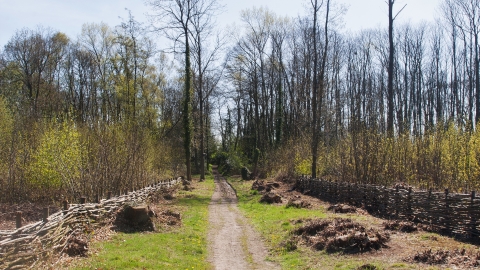
Little Haven Nature Reserve
Location
Know before you go
Dogs
Please maintain that if dogs are not on leads that they are under close control between March and September to avoid disturbance to breeding birds
When to visit
Opening times
Accessible at all timesBest time to visit
March – August is the best time to visit for the woodland flowersAbout the reserve
Essex Wildlife Trust manages Little Haven woods for our partners Havens Hospices as part of their Little Haven Hospice grounds. This wood forms part of the historical woodlands of the Daws Heath area, spanning from Hadleigh Great Wood in the east to Valerie Wells Wood in the west.
Spring is when the wood comes alive! Before the tree's leaf buds explode and the tree canopy closes, the light can reach the woodland floor enabling the woodland herbs the chance to flower. Impressive displays of wood anemone, lesser celandine and bluebells create an array of white, yellow and blue. An early morning visit at this time of year can always be rewarded by the sound of song thrush, blackcap or the drumming of great-spotted woodpecker creating a rich dawn chorus.
The summer is the best time to see the flowering plants on the acidic grassland with regionally scarce plants such as Goldenrod, Heath Speedwell and Heath Milkwort all growing beneath the pylon corridor in this rare habitat. The dense hedges also provide important nesting sites for summer migrants such as whitethroat.
The autumnal colours are always worth seeing, and exploring the woodland floor will undoubtedly turn up fascinating fungi in various shapes and sizes.
The variety of habitats mean this wonderful woodland is worth a visit at any time of year.
Contact us
Environmental designation
Did you know?
Essex Wildlife Trust carries out management under power lines to keep the area clear of trees. Management in this area has created an open corridor which has developed into species rich acidic grassland, a rare habitat in Essex. 200 years ago, the Starvelarks Wood area would have all been a flower rich acidic grassland and heather would have been a common site in the Daws Heath landscape.
